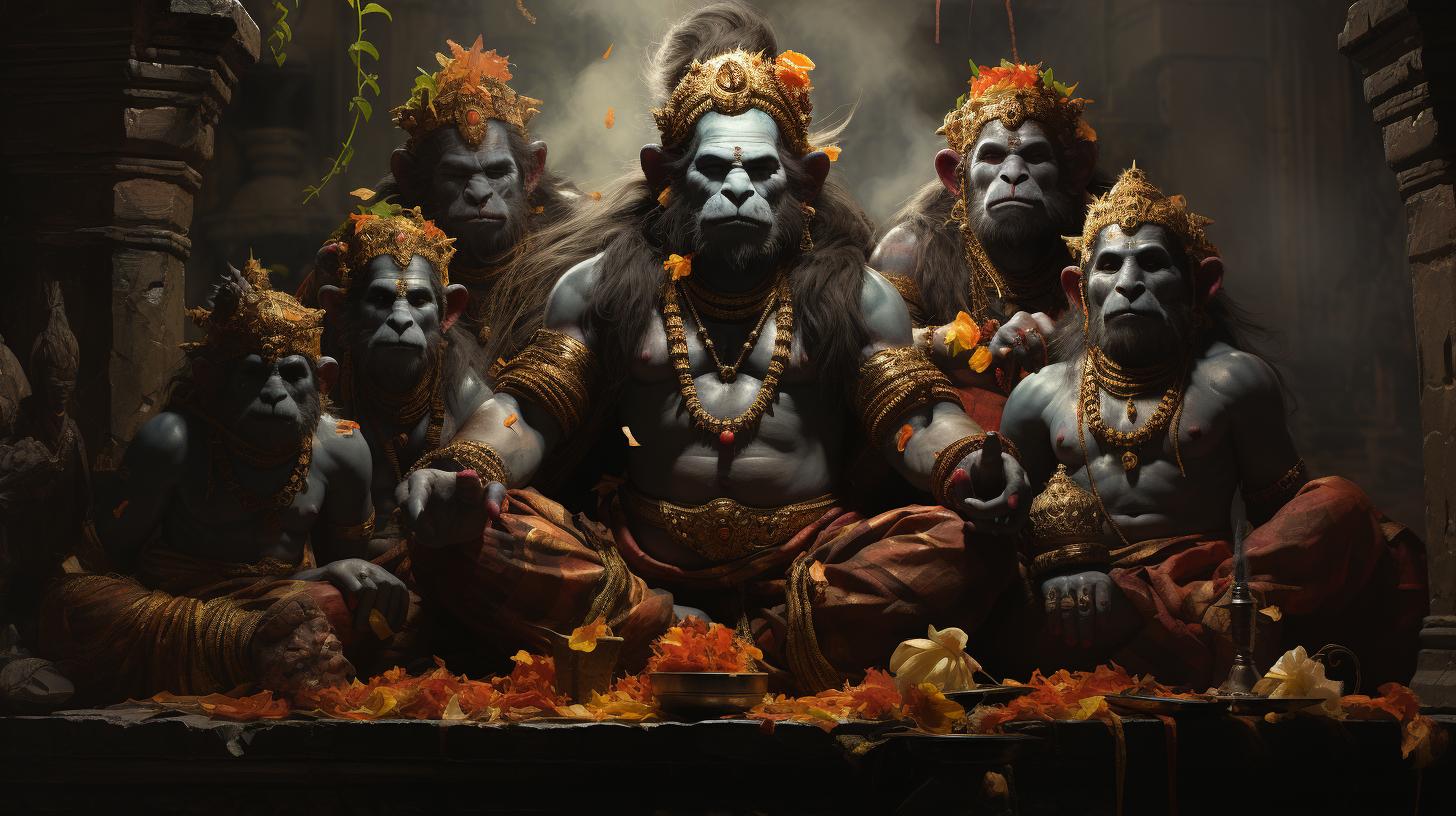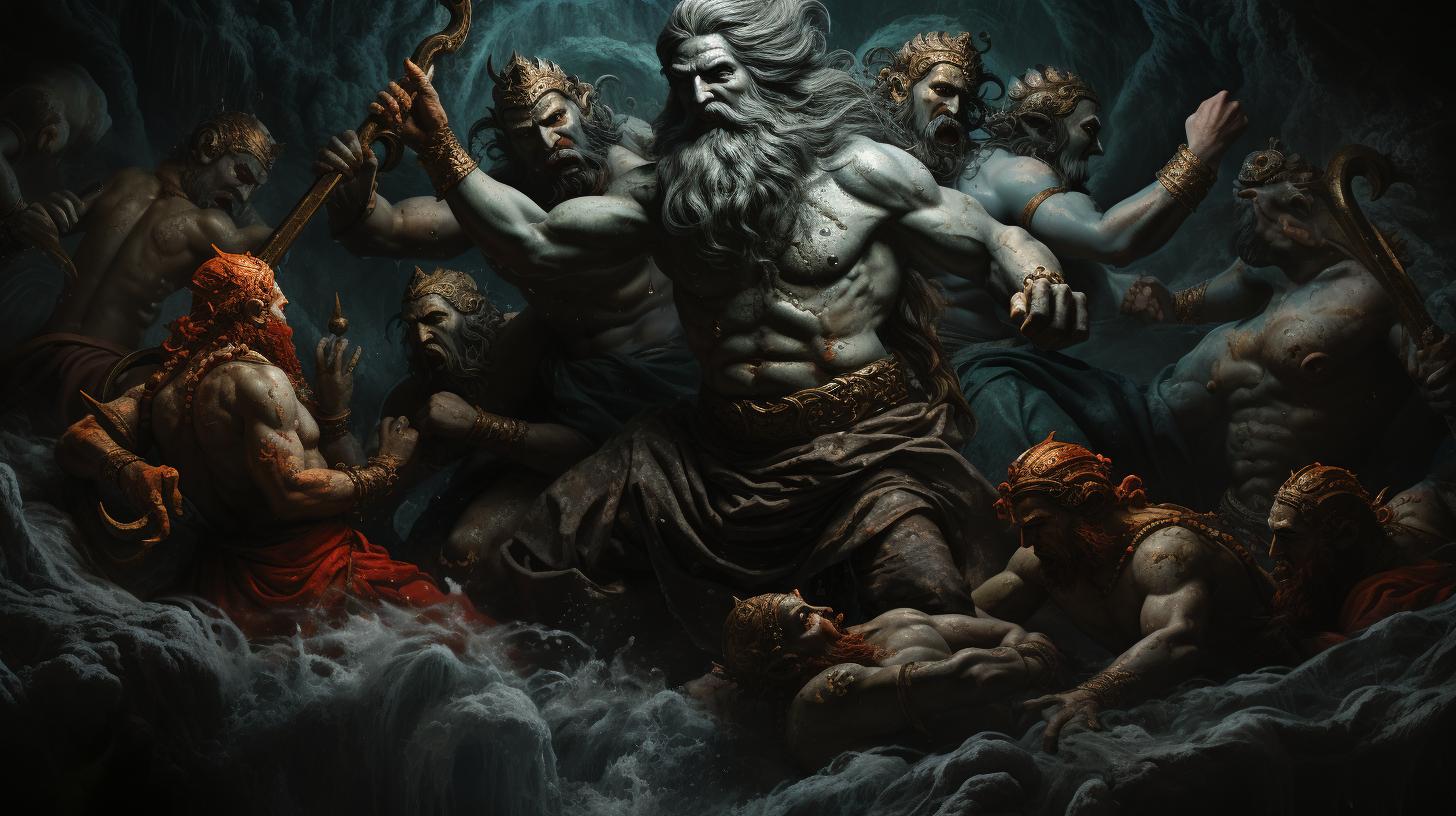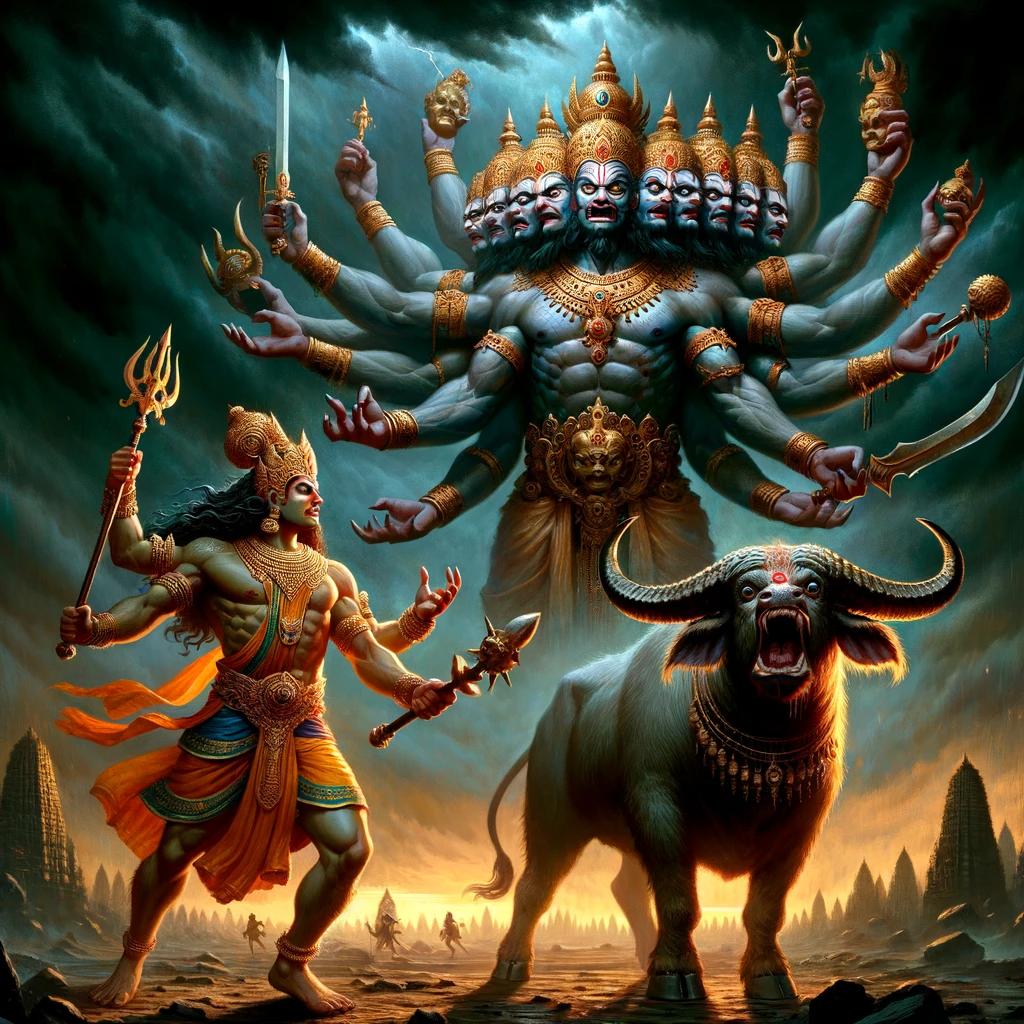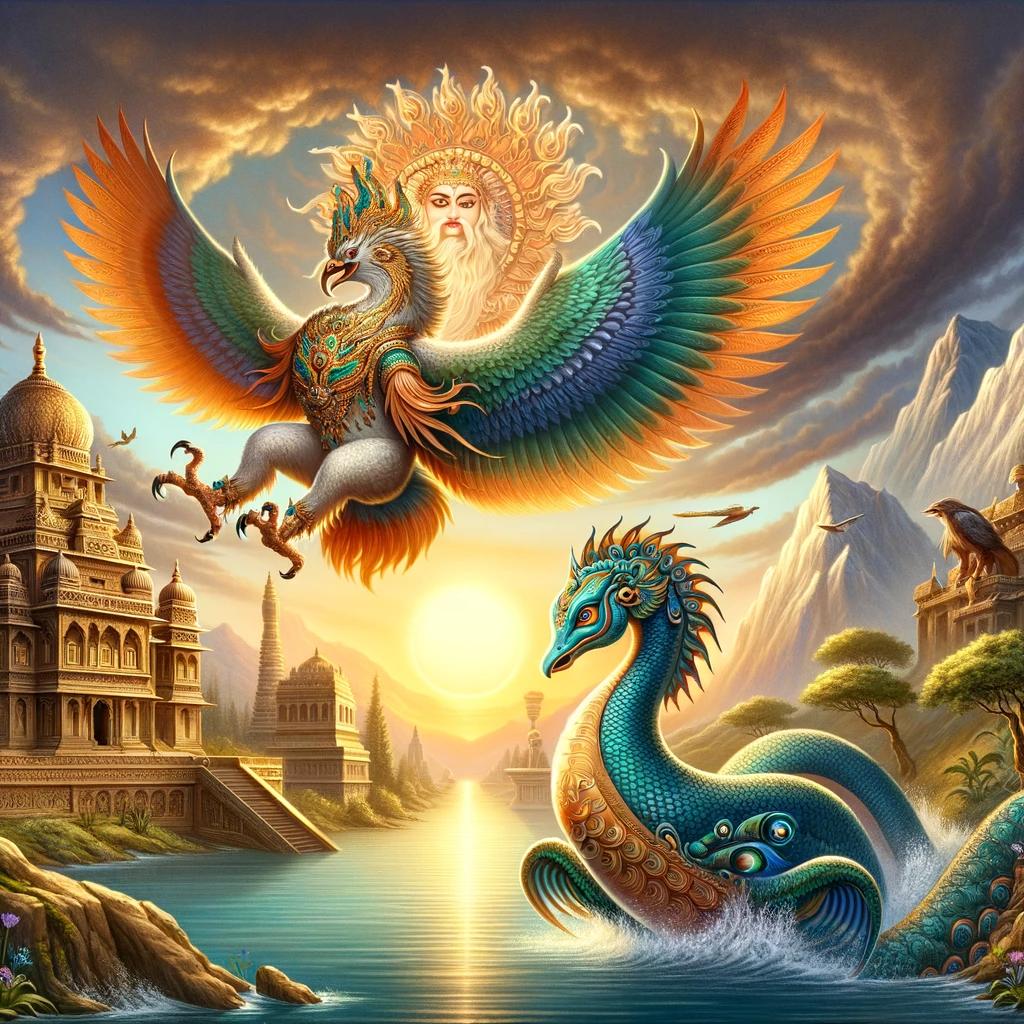Unveiling the Mysteries of Yaksha Myth: Nature, Fertility, and Sacred Guardians
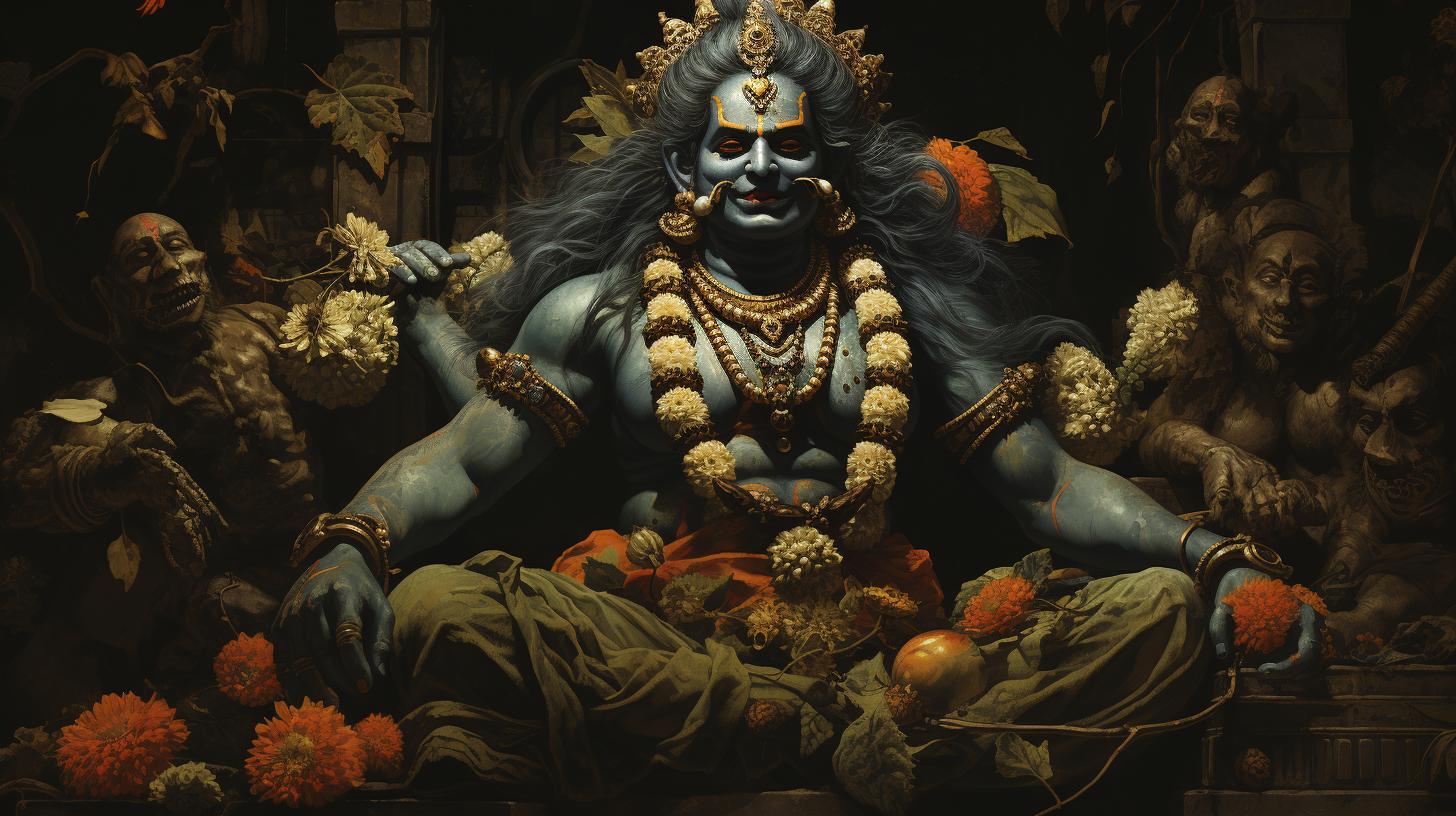
The Yaksha myth holds great significance in the mythologies of Hinduism, Jainism, and Buddhism. These mythological beings are associated with nature, fertility, and hidden treasures, and are often depicted as benevolent spirits or mischievous creatures lurking in forests.
Yakshas were revered as guardian deities of cities, districts, and sacred sites, and their worship coexisted with Vedic rituals. The early Indian art showcases diverse representations of Yakshas, ranging from fierce warriors to cheerful, plump figures.
Today, Yaksha mythology continues to inspire modern interpretations and remains relevant in contemporary pop culture.
Origins and Historical Significance
The Yaksha myth holds a significant historical and cultural presence in various religious traditions, including Hinduism, Jainism, and Buddhism. These mythical beings are deeply rooted in Indian folklore and are associated with nature, fertility, and hidden treasures.
Yakshas in Hindu Mythology
In Hindu mythology, Yakshas are portrayed with a dual personality. On one hand, they are depicted as benign nature spirits, closely linked to forests and mountains. They are considered guardians and protectors of natural elements and hidden treasures.
On the other hand, there is a darker aspect to some Yakshas, where they appear as menacing beings that haunt forests and prey on unsuspecting travelers, similar to Rakshasas.
Yakshas in Jainism
In Jainism, Yakshas are revered as divine beings associated with wealth, abundance, and fertility.
They are often depicted as benevolent and playful figures, symbolizing the harmony between humans and nature. Yakshas are considered important protectors and are worshipped for blessings of prosperity and happiness.
Yakshas in Buddhism
In Buddhism, Yakshas play a significant role and are often revered as guardian deities.
They are believed to have supernatural powers and are associated with protecting sacred sites and maintaining the balance of nature. Yakshas are depicted as formidable beings who safeguard Buddhist teachings and inspire devotion and reverence.
Nature and Characteristics of Yakshas
The Yakshas, mythological beings in India, embody a diverse range of qualities and are deeply connected to nature. They are often depicted as benevolent nature spirits associated with forests, mountains, and water bodies.
These Yakshas are depicted as guardians of the natural world, ensuring the fertility and abundance of the land. They personify beauty and harmony, symbolizing the delicate balance between humanity and the environment.
Benevolent Yakshas as Nature Spirits
One aspect of Yakshas’ nature is their benevolence and their association with the natural elements. They are revered as protectors of forests, ensuring their lushness and fertility. Yakshas are often depicted in Indian art as joyful figures, embodying the beauty and vitality of the natural world.
Their presence is seen as a source of inspiration and tranquility, bringing prosperity and abundance to those who revere them.
These Yakshas are celebrated for their ability to nurture and sustain life.
They are believed to possess a deep understanding of the natural world, harnessing its energy to foster growth and nourishment for all living beings. As custodians of the environment, they inspire reverence and respect for the delicate ecosystems that sustain us.
Darker Depictions: Yakshas as Hungry Ghosts
Contrasting with their benevolent counterparts, Yakshas also have a darker side. In some traditions, they are portrayed as hungry ghosts lurking in the shadows of forests, ready to prey upon unsuspecting travelers.
These Yakshas are consumed by insatiable hunger, seeking to satisfy their cravings with human flesh or life force.
This depiction reflects the duality of the Yaksha myth, reminding us that nature can be both benevolent and unforgiving.
These malevolent Yakshas serve as cautionary figures, warning against disrespecting the natural world and its inhabitants. They represent the consequences of disregarding the delicate balance between humanity and nature, urging us to tread carefully and honor the sanctity of the environment.
The contrasting nature of Yakshas, as benevolent nature spirits and sinister hungry ghosts, adds depth and complexity to their mythological significance, embodying the delicate interplay between harmony and chaos in the natural world.
Yakshas as Guardian Deities
Yakshas are revered as guardian deities in various religious traditions, symbolizing their important role in protecting and safeguarding. They were worshipped in different ways and considered tutelary spirits associated with specific cities, districts, lakes, or wells.
Worship and Cult of Yakshas
The worship and cult of Yakshas date back to ancient times and coexisted with Vedic sacrifices performed by priests. People offered prayers, performed rituals, and made offerings to appease these powerful deities.
Temples and shrines were dedicated to their worship, where devotees sought blessings, prosperity, and protection.
Yakshas as Tutelary Deities
Yakshas held the position of tutelary deities, acting as guardians and protectors of specific regions or sites. Their role was not only spiritual but also extended to preserving the well-being of the land and its inhabitants.
They were believed to possess the ability to bless with abundance, fertility, and harmony.
Yakshas in Indian Art and Architecture
The depiction of Yakshas in Indian art and architecture holds a significant place in the rich cultural heritage of the region. They are portrayed in various forms and styles, showcasing the artistic prowess of ancient Indian civilizations.
Let us explore the early representations of Yakshas in sculptures and their presence in Hindu and Buddhist temple art.
Early Representations in Sculptures
Yaksha sculptures can be traced back to the period of the Maurya Empire, making them some of the earliest known monumental stone sculptures in India. These sculptures exhibit a diverse range of physical appearances, varying from formidable warriors to small, chubby figures.
The intricate details and craftsmanship of these sculptures speak volumes about the artistic expertise prevalent during that time.
Yakshas in Hindu and Buddhist Temple Art
The influence of Yaksha mythology is prominently visible in Hindu and Buddhist temple art across India. Yakshas are often depicted as guardian deities, positioned at the entrances or gateways of temples, symbolizing their protective role.
These sculptures not only demonstrate the belief in the spiritual powers of Yakshas but also showcase the fusion of religious and artistic expressions in ancient Indian architecture.
The Yakshas depicted in temple art often have serene and joyful expressions, with round faces and ample physical beauty.
They add an aesthetic charm to the temple surroundings, creating a tranquil and sacred ambiance. The intricate carvings and intricate details on these sculptures attest to the reverence and significance attributed to Yakshas in religious and artistic contexts.
- The presence of Yakshas in Indian art and architecture demonstrates their deep-rooted connection to the cultural fabric of the country.
- The early sculptures provide valuable insights into the evolution of artistic representation and styles during ancient times.
- In Hindu and Buddhist temple art, Yakshas embody the protective aspect of divinity and create a sense of sanctity for the worshippers.
- Yaksha sculptures serve as a visual representation of the spiritual beliefs of the time, evoking a sense of awe and reverence.
Cultural Significance of Yakshas
Yakshas hold a prominent place in various cultural contexts, showcasing their enduring significance.
Let’s explore their presence in Thai temple art and architecture as well as their importance in the Tibetan Buddhist canon.
Yakshas in Thai Temple Art and Architecture
In Thai culture, Yakshas are revered and prominently depicted in temple art and architecture. These mythical beings serve as guardians protecting the sacred space and its worshippers. Adorned with elaborate details, Yaksha sculptures can be found at temple entrances and as decorative elements on walls and roofs.
Their presence adds a sense of divine protection and spiritual ambiance to Thai temple complexes.
Yakshas in Tibetan Buddhist Canon
In the Tibetan Buddhist tradition, Yakshas play an essential role in religious teachings. They are mentioned in ancient texts, such as the Kangyur and Tengyur, which form part of the Tibetan Buddhist canon.
Yakshas are believed to be powerful beings inhabiting the realm of earth, guarding sacred sites, and ensuring the preservation of Buddhist teachings. Their symbolism represents the protection of wisdom and the dharma, which are central principles in Tibetan Buddhism.
Through their presence in Thai temple art and their significance in the Tibetan Buddhist canon, Yakshas continue to inspire devotion, exploration, and contemplation, representing the deep-rooted cultural and spiritual traditions of the regions they touch.
Symbolism and Iconography of Yakshas
The symbolism and iconography surrounding Yakshas in Indian art and culture hold deep significance. Depictions of Yakshas in various forms provide insights into their roles and their association with wealth, prosperity, and protection.
Depictions of Yakshas in Art
Yakshas are portrayed in diverse ways in Indian artwork, reflecting their dual nature. In early sculptures, Yakshas are depicted as powerful warriors, exemplifying their protective roles. They can also be depicted as cherubic figures with round faces, symbolizing their benevolence and nurturing nature.
The iconography of Yakshas often incorporates elements of nature, such as trees, animals, or water bodies, emphasizing their connection to the natural world. They can be depicted standing, sitting, or in dynamic poses, conveying their influence and presence.
Yakshas as Protectors of Wealth and Prosperity
One of the prominent symbols associated with Yakshas is their role as protectors of wealth and prosperity. Yakshas are often depicted holding or standing next to overflowing pots or vessels, representing abundance and prosperity.
These vessels, known as “bhands” or “kalashas,” are symbols of material and spiritual riches attributed to Yakshas.
In Indian art, Yakshas are also portrayed alongside symbols of fertility and agriculture, such as earthenware, grains, and agricultural implements.
These representations highlight their association with the fertility of the land and the bountiful harvest.
Yaksha symbolism extends beyond material wealth and encompasses broader aspects of prosperity, including spiritual enlightenment and inner abundance.
Their imagery serves as a reminder of the need to cultivate balance and harmony in all aspects of life.
Ultimately, the symbolism and iconography of Yakshas in Indian art reinforce their multifaceted nature as protectors, guardians, and bestowers of abundance and prosperity.
- Depictions of Yakshas in various forms reveal their dual nature.
- Early sculptures portray Yakshas as powerful warriors or cherubic figures.
- Yakshas are often depicted alongside natural elements, highlighting their connection to nature.
- They are associated with wealth and prosperity, symbolized through overflowing vessels and agricultural symbols.
- Their symbolism encompasses material and spiritual abundance, reflecting a holistic perspective on prosperity.
Influence and Legacy of Yaksha Mythology
The rich mythology of Yakshas has had a profound influence on various aspects of contemporary culture.
From modern interpretations to pop culture references, their legacy continues to inspire and captivate audiences worldwide.
Yaksha Mythology in Modern Interpretations
In recent years, Yaksha mythology has experienced a resurgence in literary works, films, and television series. Writers and filmmakers have been drawn to the allure of these mystical beings, incorporating them into their narratives to add depth and cultural authenticity.
Through modern reinterpretations, Yakshas have been portrayed as complex characters with intricate backstories and emotional journeys. Their dual nature as benevolent protectors and mischievous tricksters offers endless storytelling possibilities, making them compelling figures in contemporary literature and media.
Yaksha Mythology in Contemporary Pop Culture
Beyond the realms of literature and entertainment, Yaksha mythology has made its way into various aspects of contemporary pop culture. From art and fashion to music and gaming, the imagery and symbolism associated with Yakshas have become iconic and recognizable.
- Art: Yaksha-inspired artwork can be found in galleries and exhibitions, showcasing the creativity and talent of artists who draw inspiration from these fascinating mythological beings. Their distinctive features and dynamic poses make them captivating subjects for visual expression.
- Fashion: Fashion designers have incorporated Yaksha motifs and elements into their collections, infusing modern garments with a touch of ancient mystique.
Traditional patterns, jewelry, and colors associated with Yakshas create unique and visually striking fashion statements.
- Music: Musicians and composers often draw inspiration from Yaksha mythology to create evocative soundscapes and lyrical narratives.
The enchanting melodies and mythical themes associated with Yakshas add depth and intrigue to musical compositions across genres.
- Gaming: Yaksha mythology has found its way into the realm of gaming, with video games featuring characters and storylines inspired by these mystical beings.
Players engage in adventures and quests that explore the rich mythological world, bridging the gap between ancient legends and modern interactive experiences.
The influence of Yaksha mythology can be felt across various domains, captivating and inspiring people of all backgrounds.
Their enduring legacy ensures that these mythical beings will continue to capture the imagination and fascination of generations to come.
.

